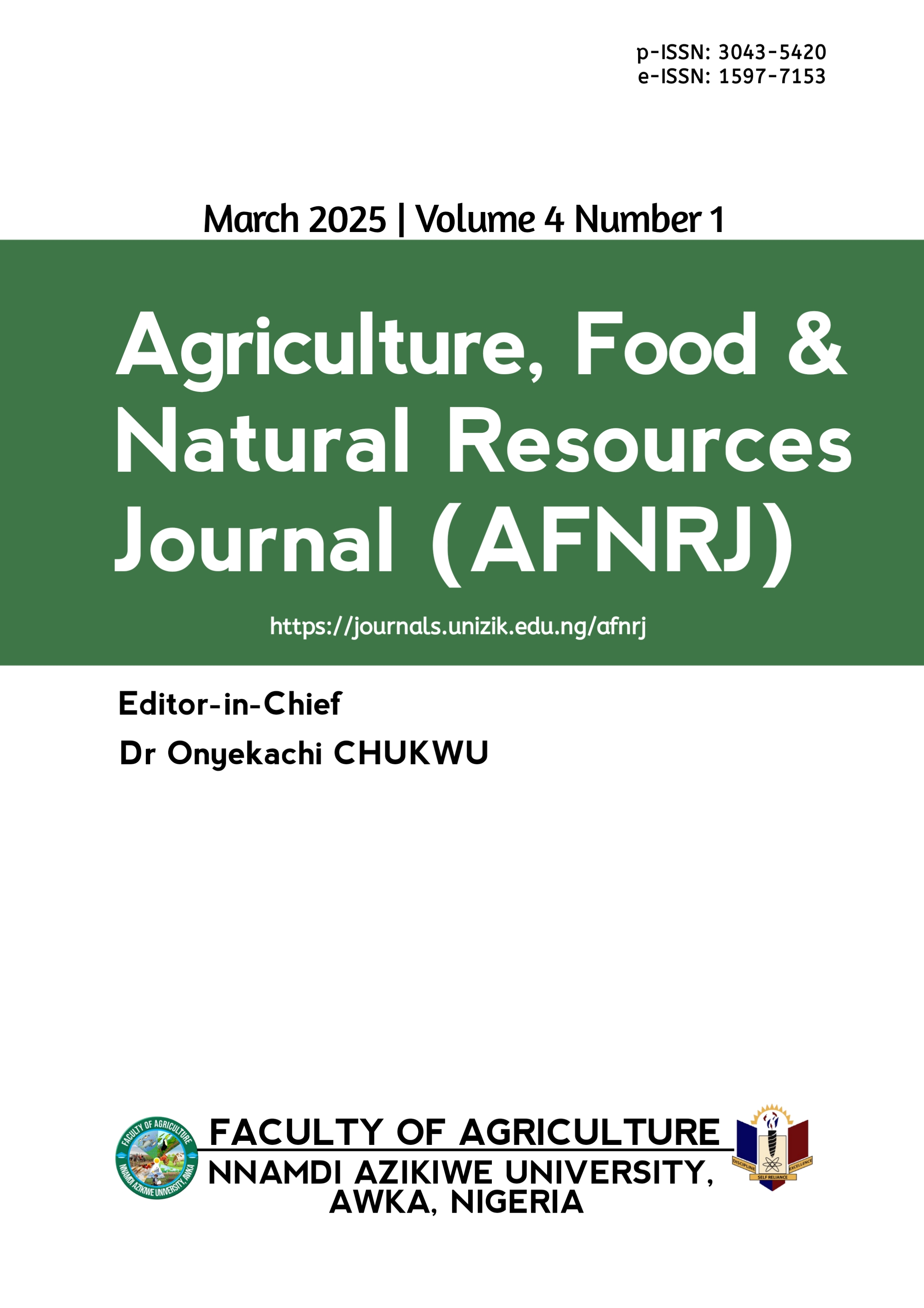Nutritional safety assessment of giant tiger shrimp (Penaeus monodon): Impact of smoking
DOI:
https://doi.org/10.5281/zenodo.15109501Keywords:
Biochemical profile, Mineral ratio, Mineral safety index, Shrimp, ShellfishAbstract
This study examined the impact of smoking on the proximate composition, mineral content, mineral ratios, and mineral safety index (MSI) of the shell and flesh of the Giant Tiger Shrimp (Penaeus monodon). Fresh and smoked samples were analyzed using standard of the Association of Official Analytical Chemists’ (AOAC) methods for proximate composition, while mineral content was determined via atomic absorption spectrophotometry. Mineral ratios and MSI were calculated to assess dietary safety. Results showed that smoking significantly reduced moisture content, leading to a concentration of nutrients. Protein, crude fat, total ash, and nitrogen-free extract (NFE) increased notably in smoked samples compared to raw ones, with protein levels rising by 63.82% in the shell and 73.29% in the flesh. Mineral concentrations, including calcium, sodium, and potassium, also increased significantly post-smoking. While mineral ratios such as Ca/Mg, Ca/P, and Na/K mostly remained within recommended dietary limits, the Na/Mg ratio showed deviations. MSI analysis indicated that calcium and sodium levels exceeded recommended thresholds, suggesting potential health risks if consumed in excess. Given the high sodium content, moderate consumption of smoked P. monodon is advised, particularly for individuals with hypertension or cardiovascular concerns. Additionally, pairing smoked shrimp with potassium-rich foods may help balance sodium intake and mitigate potential health risks.
Downloads
Published
Issue
Section
License

This work is licensed under a Creative Commons Attribution 4.0 International License.
which permits unrestricted use, distribution, and reproduction in any medium, provided the original author and source are credited.
Authors retain the copyright of their published work in the AFNRJ.





